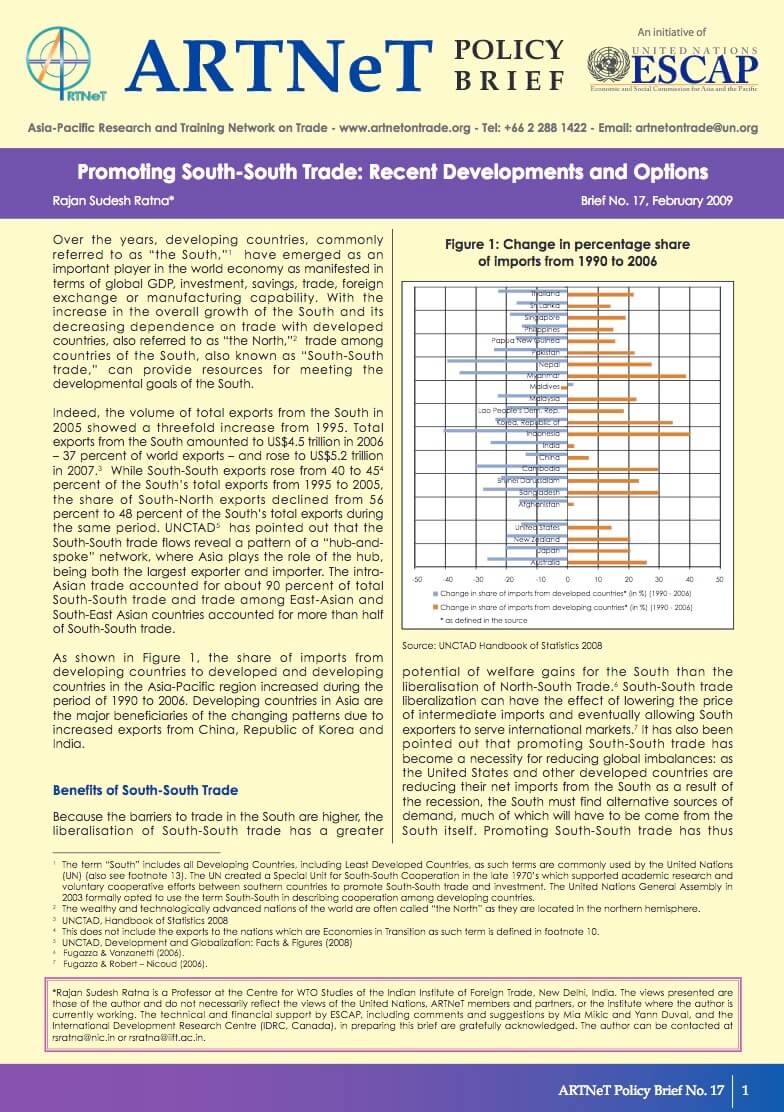Promoting South-South Trade: Recent Developments and Options

Over the years, developing countries, commonly referred to as “the South,” have emerged as an important player in the world economy as manifested in terms of global GDP, investment, savings, trade, foreign exchange or manufacturing capability. With the increase in the overall growth of the South and its decreasing dependence on trade with developed countries, also referred to as “the North,” trade among countries of the South, also known as “South-South trade,” can provide resources for meeting the developmental goals of the South.
Indeed, the volume of total exports from the South in 2005 showed a threefold increase from 1995. Total exports from the South amounted to US$4.5 trillion in 2006 – 37 percent of world exports – and rose to US$5.2 trillion in 2007. While South-South exports rose from 40 to 45 percent of the South’s total exports from 1995 to 2005, the share of South-North exports declined from 56 percent to 48 percent of the South’s total exports during the same period. UNCTAD has pointed out that the South-South trade flows reveal a pattern of a “hub-and- spoke” network, where Asia plays the role of the hub, being both the largest exporter and importer. The intra- Asian trade accounted for about 90 percent of total South-South trade and trade among East-Asian and South-East Asian countries accounted for more than half of South-South trade.
